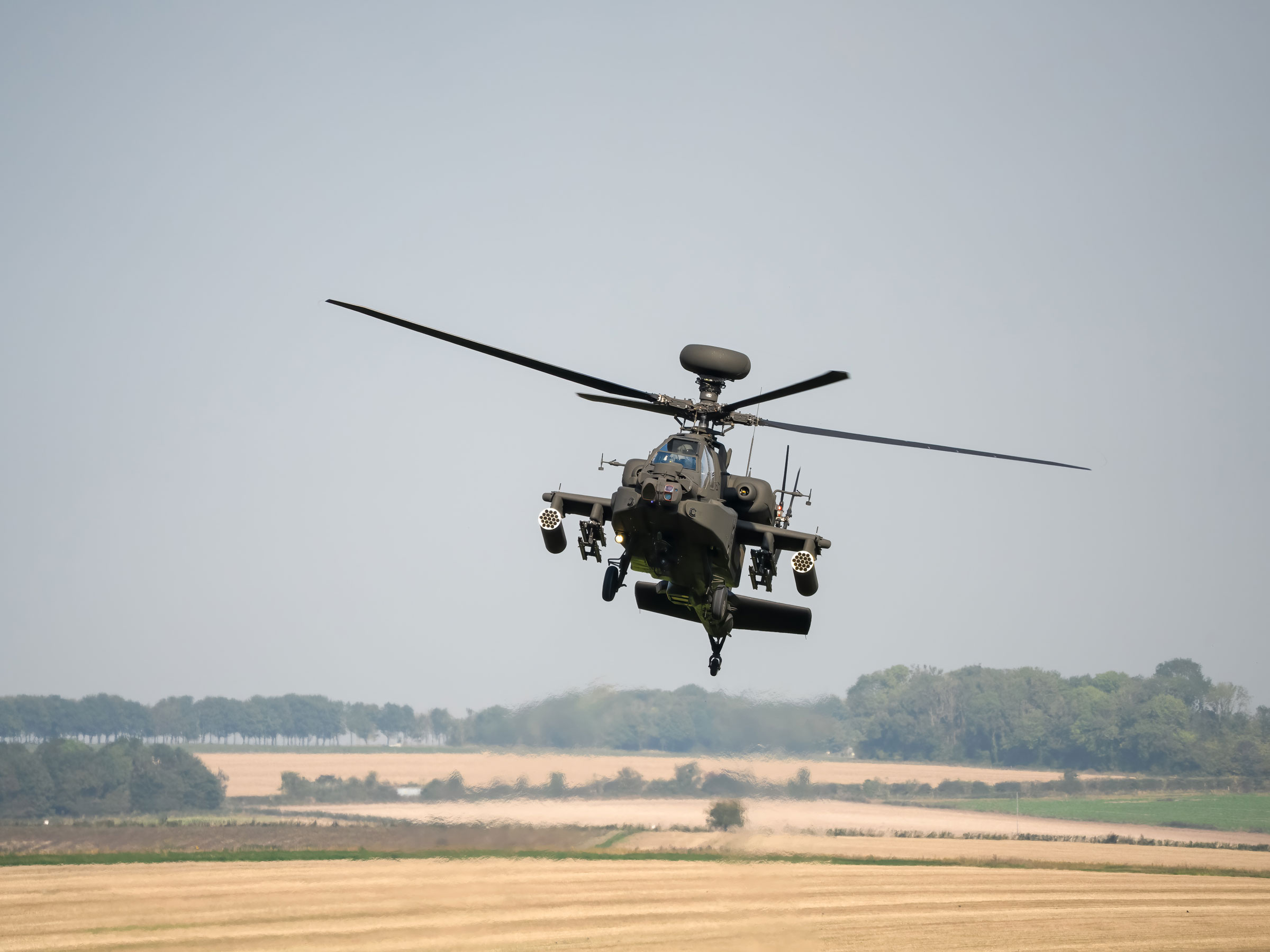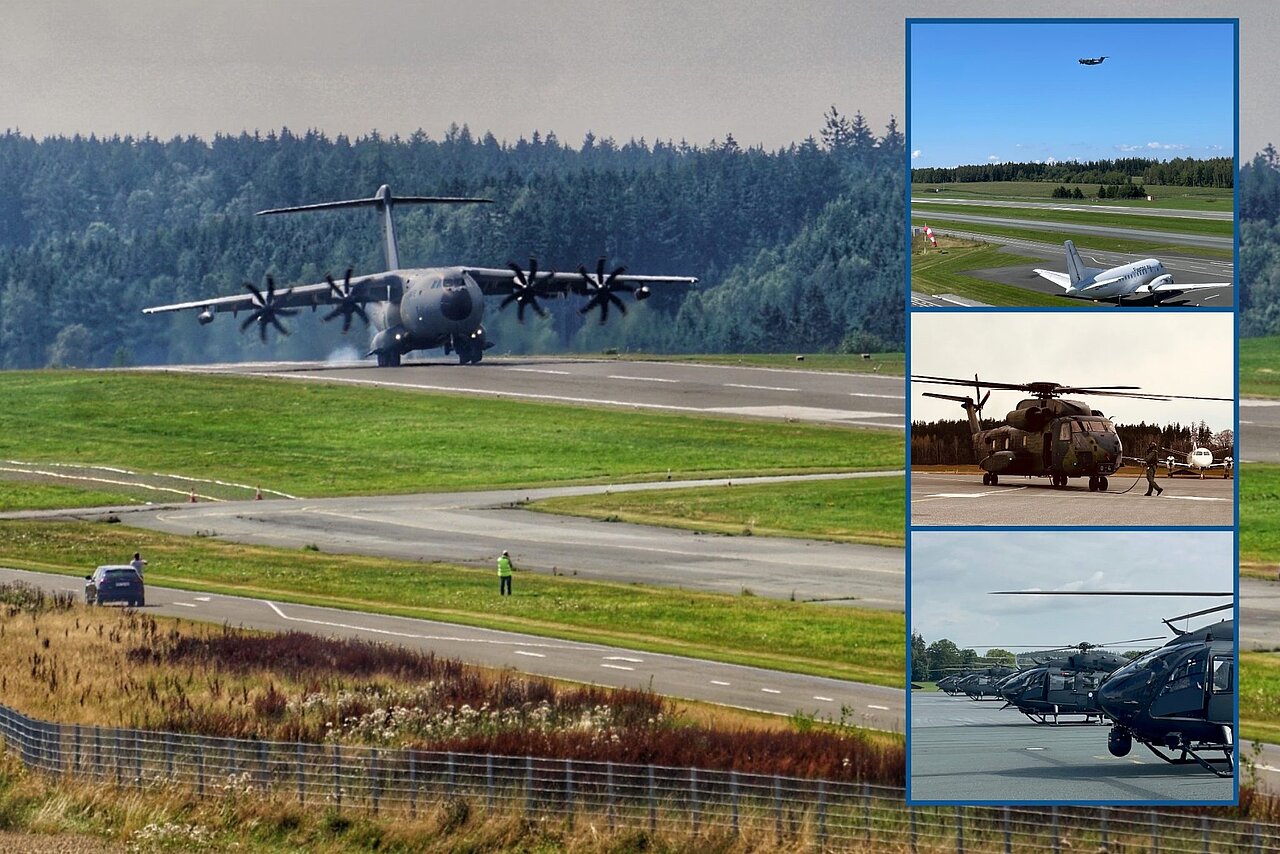We have summarised the most frequently asked questions for you here:
Answer: YES
The reasoning is simple:
Hof Airport is authorised and licensed as a commercial airfield for public air traffic. As such, it is available for use by all aircraft in accordance with the operating licence. No distinction is made here between civil and military (regardless of whether it is the German Armed Forces or NATO countries)!
Restrictions on the use of civilian aerodromes therefore result at most from the local infrastructure, runway length and width, apron sizes, load-bearing capacity of the flight operation areas and the existing fire protection.
Conversely, civil aircraft may fly through military airspace with authorisation or land at purely military airfields with the approval of the site commander.
This is regulated in the international aviation law of the ICAO (International Civil Aviation Organisation) as well as at European level by legal acts of the EASA (European Aviation Safety Agency).
As already mentioned, our airport can also be approached by military aircraft at any time.
In addition to flights through our control zone, there are of course also landings and take-offs by military helicopters of various sizes and nationalities.
What do these helicopters do here?
Smaller helicopters (e.g. EC35 and EC45) - some in civilian livery - carry out training flights for future military pilots to/from us according to visual and instrument flight rules and use the opportunity between flights for refuelling.
Larger helicopters (e.g. CH53 of the German Armed Forces, US Army Black Hawks) come for refuelling. The two CH53 squadrons in Laupheim and Holzdorf in particular take advantage of this opportunity, as Hof is located exactly halfway along the route.
In the past, Hof was also used by the CH53 helicopters as a refuelling base for flights to fight forest fires.
The Bundeswehr adheres to all approach and departure procedures in the same way as other aircraft. In the case of visual flight, this concerns adherence to the aerodrome circuit, but also the avoidance of overflights over built-up areas insofar as this is possible with an aircraft of this size. It can therefore not be completely ruled out that aircraft are perceived as low and loud, but that the flight route, aerodrome circuit and approach/departure are actually within the permitted limits.
In short: Yes!
However, it should be noted that a large aircraft (e.g. A400M) always appears lower at the same altitude than a small propeller aircraft due to its size.
Military flights always adhere to the applicable aviation regulations (minimum safety altitude for visual flights), but may also deviate from them. This also applies to flying below the minimum altitude, as other regulations apply here.
In principle, the aircraft fly at an altitude range of approx. 500 FT (= 150 metres above ground) to 1500FT (= 500 metres above ground) for visual flights. For the purpose of landing and take-off, the minimum safety altitude may be undercut.
As there are no published aerodrome circuits in a control zone such as Hof (which are used by the pilot to organise his landing preparations and are always about 1000 FT higher than the aerodrome altitude above sea level), the pilot organises his own aerodrome circuit. Unless he is instructed to do so by the tower controller.
This means that a house may be flown over on one circuit and not on the next. All pilots should endeavour to avoid larger towns and villages if the performance data of the aircraft permits. Safety first!
We are asked this question time and time again.
The simple answer is that there is always a difference between carrying out an empty flight for training purposes and transporting passengers and their luggage.
In the case of Bundeswehr transport aircraft, no material is loaded for training purposes, or if so, only certain material. The Bundeswehr has its own regulations regarding take-off weight to ensure that operations can be carried out safely and successfully.
In the passenger sector, on the other hand, airlines often set their own additional regulations for operations over and above the applicable legal provisions and write these in the so-called "Flight Operations Manual".
For example, the airline stipulates that only airports with active air traffic control, a safety area, instrument approach procedures, corresponding obstacle clearance heights and a minimum runway length depending on the aircraft type may be approached. From the 1990s onwards, the trend here was towards large aircraft models such as the Boeing 737 and Airbus A320. For these types, operation on our runway would be technically possible in some cases, but not economical enough due to further restrictive regulations.
In this context, many citizens also ask:
Why do passenger aircraft fly on short runways in the Mediterranean but not here?
Without going too far into the physics of flight: The height of the airfield above sea level, temperature, humidity, air pressure and the resulting density altitude are different (better) at sea level than here at an altitude of around 600 metres above sea level. If our piste length of 1480 metres was calculated down to sea level under ideal conditions, half the length would be sufficient. The difference in altitude alone makes up that much...
According to the Bundeswehr, it plans to use our airport a maximum of 8 times a month for training purposes for the A400M and C130J Hercules aircraft types.
Unfortunately, we don't know that either.
The Bundeswehr plans its training flights on its own responsibility. In the best case scenario, we receive a brief announcement by email and a flight plan based on this with a maximum of 1 hour's notice. But even a spontaneous radio message during tactical visual flights shortly before the control zone (CTR) would be sufficient for an approach, but this cannot be planned in advance.
The flight plans are also not binding as long as the aircraft have not actually taken off, so there may still be delays or even cancellations of the flight plan.
We have no influence on the Bundeswehr's plans.
Mon - Fri: 07.00 - 20.00
Sat, Sun, Hol: 09.00 - 19.00
Other times: PPR


